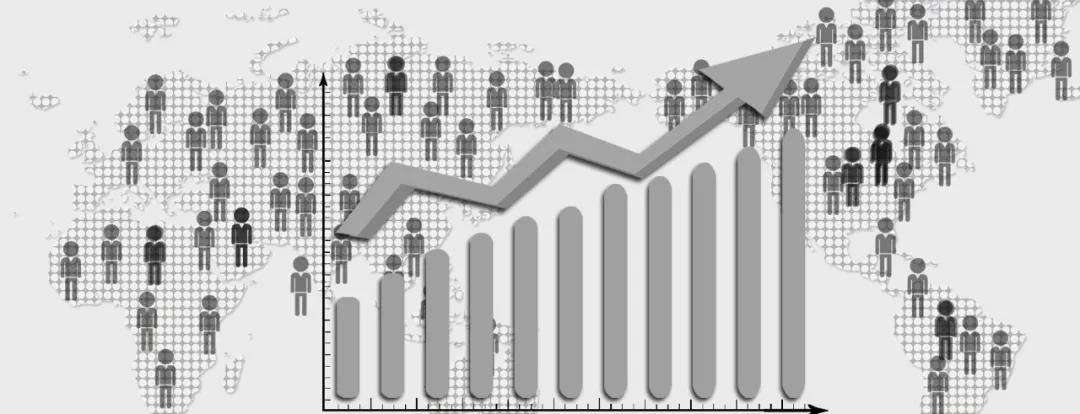
张军教授在世界著名思想评论平台网Project Syndicate撰文“China's Accelerating Fertility Crisis”,并获China Daily转载(题目改为“Economies Need to Rein in Population Risks”)。特将此文翻译为中文,以飨读者。
作者 | 张军 复旦大学文科资深教授、经济学院院长、中国社会主义市场经济研究中心主任,上海国际金融与经济研究院理事
从历史角度看,人口数量一直是一个缓慢变动的变量。但是,东亚经济体——特别是中国、日本和韩国——从人口快速增长转为下降的变化过于迅速,以至于这些经济体实际上出现严重问题。

在改革开放前,作为一个计划经济体,中国曾经执着地追求扩大人口数量。但是,1957年,经济学家马寅初发表了《新人口论》并告诫人们,人口快速增长会很快妨碍中国经济发展。尽管政府最初批评马寅初的理论,但是中国领导层最终接纳了他的警示,开始以鼓励计划生育的方式促进经济增长。
1973年,中国更进一步,在全国推行“晚、稀、少”(“晚结婚,拉长生育间隔,少生孩子”)运动,由此鼓励一对夫妻最多只生育2个孩子。6年后,这一运动转变为独生子女政策。为保证独生子女政策的影响力,计划生育在1982年被写入中国宪法。
生育率锐减。到20世纪80年代中期,总和生育率只是略高于所说的人口替代率2.1这一水平,而60、70年代的生育率曾达到6.0。到90年代,生育率下降到只有1.2-1.3——这一水平注定会显著加速中国人口老龄化。然而,政府继续执行独生子女政策,直到2016年才实施全面二孩政策。
由此,中国生育率有些许回升,国家统计局的数据表明,生育率在2017年达到1.58。但这之后,生育率又开始下滑,从2018年的1.49降至2019年的1.47。根据人口经济学家梁建章估计,生育率很可能重回90年代水平。
据梁建章的说法,2017年的总和生育率为1.58,其中0.67的生育率来自一孩家庭,0.81来自二孩家庭,0.11来自三孩(或有更多孩子的)家庭。二孩家庭的生育率高于一孩家庭的水平,这一事实反映出二孩“堆积效应”——也就是说,有的一孩家庭,原本就打算生育二孩,在全面二孩政策出台后,他们才终于能生育二孩。无需多长时间,这种政策效应就会消弭,由此,总和生育率会迅速降至1.2,让中国落到韩国和新加坡的水平,并很可能低于美国水平。
梁建章的观点得到了印证,2016年以前的出生趋势确实如此。2010年,一孩出生率为0.73。虽然这一数字在2011到2013年间略有上升,但还是在2014年降至0.72,2015年降到0.56。考虑到生育一孩一直是允许的,那么绝大多数一孩出生后都会登记,这意味着一孩家庭的总和生育率不大可能被低估。
总体看,在过去10年,中国每年出生不到1800万人,这与高峰年份2500万到3000万的年出生人口形成鲜明反差。2019年,中国只登记了1.465亿新生儿。2020年,这一数字降至1.003亿——与上年同比下降了15%。尽管2020年的这种新生儿数量大幅度下降可能反映了新冠肺炎大流行的影响,但这一下行态势是清晰的。
中国生育率快速下降反映出计划生育政策的后遗症。并且,这些问题还源于快速且持续的城市化、普及教育以及经济发展——众所周知,这些因素会促使出生率显著下降。
日本正是这样的例子。日本崛起到先进经济体阶段后,该国生育率大幅下降。然而,1995年,出生率跌至1.5以下。10年后,出生率到了1.26。随后,政策开始鼓励生育,帮助提升了生育率,但是只升到1.4,这一水平保持到今天。
韩国做得更糟。尽管韩国政府一直鼓励人们多生育,但是该国生育率在2017-18年徘徊在1.0左右,去年则降到0.84——这是世界最低水平。
与日本一样,韩国的低生育率很大程度上能归因于经济因素。快速增长和大规模城市化抬高了住房、教育和医疗成本,此时,夫妻更不想要孩子。这意味着严峻的风险,快速上升的老年人口抚养比仅仅是一个开始。
在中国,劳动年龄人口在过去10年每年减少约340万。今天进入劳动力市场的人,在他们大部分出生的时候,生育率已经低于更替水平了。并且,随着预期寿命的上升,中国的老年人口(60岁及以上)占总人口比重,从2005年的10.45%上升到2013年的14.7%,到2019年达到18.1%。今天,中国的老年人口比儿童(15岁及以下)更多。到2050年,中国的老年人口预计会大概翻一番,从今天的2.54亿达到差不多5亿。
由于劳动力参与水平下降了,这些趋势就会显著地妨碍中国经济的潜在产出增长,并给公共预算带来巨大压力,因为养老金和社会保障支出远远超出个人所得税总收入。这种情况已经并正发生在日本与韩国。
中国总是对放松计划生育规定保持谨慎。但是,如果中国要在未来几十年中保持自身经济活力,就必须努力扩大劳动力规模,包括延迟退休年龄、鼓励家庭多生育。否则,中国人口会像美国作家海明威描述的那样“慢慢地,然后一瞬间”变老。
(作者感谢上海国际金融与经济研究院“后新冠时期中国经济的转型与增长路径:新条件与新机遇”课题为本研究提供的资助)
英文版
Economies need to rein in population risks
Editor's Note: Aging populations have far-reaching impacts on East Asian economies. In particular, China faces some serious demographic challenges. What should China do to overcome those challenges? Three experts share their views on the issue with China Daily.
Historically, demographics have been a slow-moving variable. But the East Asian economies-especially China, Japan, and the Republic of Korea-have flipped so fast from rapid population growth to decline that they practically have whiplash.
As a planned economy, China was once obsessed with expanding its population. But, in 1957, economist Ma Yinchu published The New Theory of Population and cautioned that this trend would soon begin to undermine China's economic development. Though the government initially criticized his theory, Chinese leaders eventually took his warnings to heart, encouraging family planning as a way to promote economic growth.
In 1973, China went a step further, with the national wan, xi, shao ("late marriage, longer spacing, and fewer children") campaign, which encouraged couples to have no more than two children. Six years later, this changed into the one-child policy. To ensure its long-term impact, family planning was finally written into China's Constitution in 1982.
The fertility rate plummeted. By the mid-1980s, it hovered above the so-called substitution level of 2.1, compared with 6.0 in the 1960s and 1970s. In the 1990s, the fertility rate fell to just 1.2-1.3-a level that promised to hasten the country's demographic aging significantly. The government nonetheless continued to enforce the one-child policy until 2016, when it allowed all couples to have two children.
With that, China's fertility rate bounced back somewhat, reaching 1.58 in 2017, according to the National Bureau of Statistics. But it is back on a downward slide, falling from 1.49 in 2018 to 1.47 in 2019. According to population economist James Liang, it may be set to return to the 1990s levels.
As Liang said, in 2017, the total fertility rate of 1.58 reflected a fertility rate of 0.67 for one-child families, 0.81 for two-child families, and 0.11 for three-child families. The fact that the fertility rate of two-child families is higher than that of one-child families reflects the two-child "accumulation effect"-that is, one-child families that had previously wanted to have a second child finally being able to have one. Before long, that effect will dissipate, and the total fertility rate will quickly drop to 1.2, putting China in the same position as the ROK and Singapore, and possibly behind the United States.
This view is supported by pre-2016 birth trends. In 2010, the one-child birth rate stood at 0.73. While it increased slightly in 2011-13, it fell to 0.72 in 2014 and 0.56 in 2015. Given that one child was always allowed, the vast majority would have been registered, meaning that these fertility rate figures for one-child families are unlikely to be underestimates.
Overall, there have been fewer than 18 million births annually over the last decade, compared with 25-30 million during the peak years. In 2019, China registered only 14.65 million newborns. Last year, that figure dropped to 10.03 million-a year-on-year decline of nearly 15 percent. Although the sharp decline in births in 2020 might reflect the impact of the novel coronavirus pandemic, the downward trend is clear.
China's rapidly declining fertility reflects the legacy of family planning policies. They are also increasingly driven by rapid, sustained urbanization, universal education, and economic development-factors that are known to contribute to significant declines in birth rates.
This was certainly the case in Japan, whose rise to advanced economy status was followed by a sharp drop in fertility. In 1995, however, the birth rate dropped below 1.5. A decade later, it stood at 1.26. Policies to encourage childbirth subsequently helped increase the fertility rate, but only to 1.4, where it remains today.
The ROK is doing even worse. Although the ROK authorities have tried to encourage people to have more children, the country's fertility rate hovered around 1.0 in 2017-18, before dropping to 0.84 last year-the world's lowest.
As is true in Japan, the ROK's low fertility rate can be explained largely by economic factors. With rapid growth and large-scale urbanization driving up housing, education and health-care costs, couples are less willing to have children. This implies serious risks, beginning with a rapidly growing old-age dependency ratio.
In China, the working-age population has shrunk by some 3.4 million per year over the last decade. Those who are joining the workforce today were largely born when the fertility rate was already below the replacement level. And with life expectancy increasing, the share of China's elderly population (aged 60 or above) increased from 10.45 percent in 2005 to 14.7 percent in 2013, and to 18.1 percent in 2019. Today, there are more elderly people in China than children (aged 15 years or below). And by 2050, the number of elderly in China is expected to nearly double, from 254 million today to almost 500 million.
These trends will significantly undermine the potential output growth of the Chinese economy, owing to decreased labor force participation, and put tremendous pressure on public budgets, as outlays for pensions and social security far exceed income payroll-tax revenues. This is already happening in both Japan and the ROK.
China has always been cautious about loosening family planning rules. But if it is to sustain its economic dynamism in the decades to come, it must work hard to expand its labor force, including by raising the retirement age and encouraging families to have more children. Otherwise, its population will become old in the same way Ernest Hemingway described.
By Zhang Jun, Dean and professor of economics at Fudan University, Vice Dean of Fudan Development Institute, Director of the China Center for Economic Studies.
翻译 | 石烁
文章来源 | 张军说
